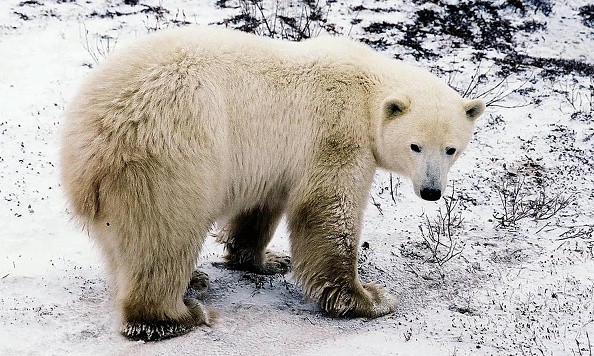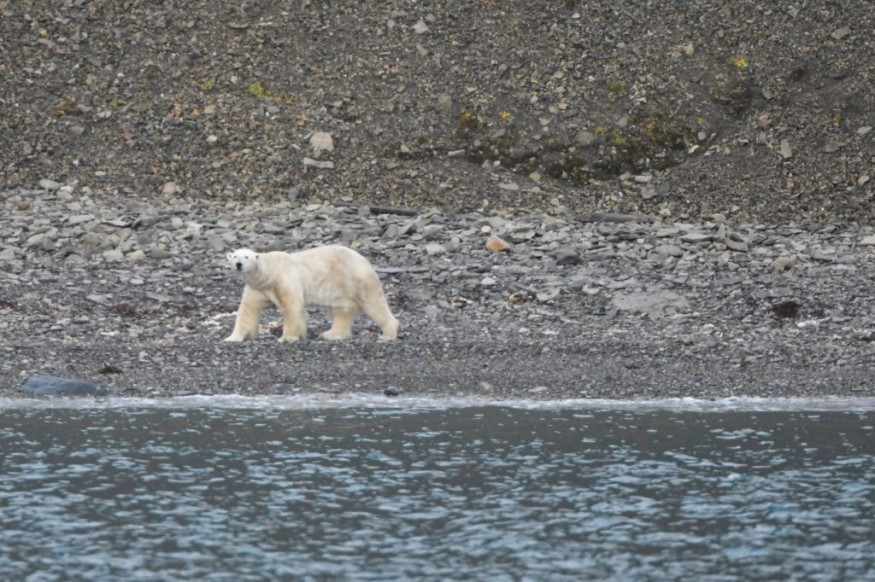Polar bears were discovered to flourish despite a lack of sea ice providing hope for the species. According to researchers, an isolated population in southeast Greenland has survived due to freshwater runoff from glaciers.

Polar Bears as the Face of Climate Crisis
Polar bears have become the furry face of the climate crisis, with experts predicting that the creatures will go extinct in a couple of decades as the Arctic sea ice from which they hunt melts.
However, scientists have discovered a group in southeast Greenland surviving despite a lack of sea ice for much of the year.
The polar bears, who appear to have been separated from other populations for many hundred years, have survived owing to freshwater ice from glaciers that flow into the sea, according to the scientists.
The researchers note that, despite predictions of a significant drop in Arctic polar bear numbers, the discovery provides a ray of optimism, not least since circumstances in southeast Greenland now are comparable to those projected in the high Arctic by the end of the century.
"I do believe they might tell us something about where unusual, tiny numbers of polar bears would be able to cling on in the ice-free Arctic," said Dr. Kristin Laidre of the University of Washington, who collaborated with the Greenland Institute of Natural Resources on the study.
How are polar bears in southeast Greenland responding to sea ice loss?
Laidre and colleagues report in the journal Science that their studies of the movement, genetics, and demographics of a sub-population of polar bears along the east Greenland coastline revealed the presence of two distinct groups, one above 64 degrees north and the other below, in the island's southeast.
New Sub-Population of Polar Bears

According to the study, the latter fits the requirements for a new sub-population of polar bears, increasing the number found to date from 19 to 20, and are the most genetically isolated polar bears in the Arctic. Their travels are restricted by steep terrain, the Greenland ice sheet to the west, the open sea to the east, and a lack of appropriate habitat to the south.
"They're geographically, genetically, and demographically isolated, which means they're not associating with other bears," Laidre explained, emphasizing that the group is not turning into a new species.
"Once in a while, an immigrant comes in and provides genetic variety to the community," Laidre explained. "However, because they are geographically isolated, they do not receive much genetic input from other polar bears from other regions of the Arctic."
Un Odd Area for Polar Bears

At first look, southeast Greenland may appear to be an unusual home for polar bears, given sea ice is present for less than a third of the year. However, when glaciers in the fjords travel towards the ocean, the ice that breaks off may produce icebergs and gather in front of the glacier, creating a "floating landscape" from which they can hunt all year.
"What we know about polar bears is that having sea ice for approximately 100 days a year is simply too few for bears to live," she explained. "They can make it in this confined setting because they have a backup ice platform."
It is not the first time polar bears have been observed moving along glacier fronts. Still, the research believes that the newly detected population - estimated to number a few hundred individuals - is unique in that such characteristics are critical for their survival.
However, Laidre stated that such environments are scarce and expected to change due to global warming and that the tiny gene pool of southeast Greenland bears may become problematic if immigrant bears fail to appear.
Prof Andrew Derocher, a polar bear expert at the University of Alberta who was not involved in the study, said the research showed polar bears in southeast Greenland comprised a distinct genetic group with isolation and inbreeding - though the lack of a fixed definition made determining whether it was a new subpopulation difficult.
"I suspect that as the Arctic's climate continues to warm, this study will reflect a pattern that will emerge much more frequently: declining abundance combined with low immigration will result in genetically distinct groups of polar bears scattered across the Arctic that will be extirpated over time," he said.
On the Verge of Extinction
The low body condition and birth rate observed in southeast Greenland imply that this group of bears is already on the verge of extinction.
Related Article : Pandas Are Now Off Endangered Species List, But They're Still Not Safe From Threats
For more wildlife news, don't forget to follow Nature World News!
© 2025 NatureWorldNews.com All rights reserved. Do not reproduce without permission.





